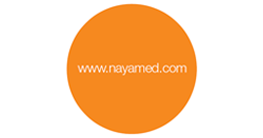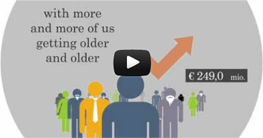Shock reduction using ATP as 1st line therapy for spontaneous sustained ventricular tachycardia in patients with ischemic dilated cardiomyopathy and severly depressed ventricular function
Posted: September 26, 2014 Filed under: eHealthCare, Medical Devices, Professionnal guest Leave a commentAuthors: Stefano Nardi MD, PhD (*), Luigi Argenziano MD, PhD (*)
(*) Arrhythmia, Electrophysiologic Center and Cardiac Pacing Unit, Thoracic Surgery and Cardiovascular Department, Presidio Ospedaliero Pineta Grande, Castel Volturno (CE), Italy (I)
Introduction
Implantable cardioverter-defibrillators (ICDs) have clearly demonstrated to terminate an elevated percentage of sustained ventricular tachycardia (SVTs), both with shock therapy and, painlessly, with antitachycardia pacing (ATP). The purpose of this study was to investigate the efficacy and safety of ATP as 1st line therapy for terminating SVTs, occurring in patients (pts) with coronary artery disease (CAD) and severely depressed left ventricular ejection fraction (LVEF) due to not reversible causes, comparing this approach with shock.
Figure 1: Rationale for ATP Rx is that a “WAVE-FRONT” critically temporized with VTCL and applied proximal to the “Slow Conduction Zone” is able to capture the CIRCUIT, then interrupt the reentry
Methods
From March 2004 through June 2013, 408 consecutive patients (pts) were considered eligible for this study, according with MADIT and/or SCD-HeFT criteria, and 387 of them (94,8%) accepted and underwent ICD implant. Pts were randomly assigned to ATP group (190/387) or shock group (197/387) and three zone of detection were assigned in all pts: a slow VTs window (320-400 msec), a fast VTs window (240-320 msec), and a ventricular fibrillation (VF) window (<320 msec). In ATP group, 3 burst sequence were programmed in slow VT zone and 1 burst sequence was programmed in fast VTs zone (burst sequences of 8-10 pulses at 88% CL) before shock, respectively, whereas in shock group (87/169) shock was adopted as 1st line therapy for all SVTs. No statistically differences, in term of age (72,2 vs 73,4, p=NS), sex (man 73,1% vs 69,3%, p=NS), NYHA functional class (2,8 vs 2,6, p=NS), LVEF (24,5% vs 26,9%) and drugs therapy were observed between two groups. Based on the evaluation of stored electrograms (EGMs), we aimed to prospectively follow pts and to analyze these two different therapeutic approach.
Figure 2: ATP programmability with adaptative cycle length
Results
A total of 3,288 spontaneous VTs episodes occurred in 171 pts (41,9%) during a mean follow-up of 54,4±23,1 months (90 pts in ATP group and 81 pts in shock group). Among these, 2,235/3,288 (67,9%) were SVTs and 612 of them (27,4%) were detected in VF zone, and then treated with primary shock delivery, whereas in the remaining 1,623 of them (72,6%), 936 episodes occurred in ATP group (57,6%) and 687 episodes occurred in shock group (42,4%). In ATP group, ATP was able to terminate successfully 80,7% of SVTs, failed in 9,3% of SVTs, finally reverted by shocks, and in 10% of SVTs ATP was able to converted arrhythmias in a slower VT, outside the VT zone. 61% of these slower SVTs were self-terminating whereas 39% were redetected and treated. Finally, in primary intention-to-treat basis, ATP was successful in 834/936 SVTs (89%) and unsuccessful in 102/936 SVTs (11%). In contrast, 657/687 (95,6%) of all SVTs episode detected in VT zone and that occur in shock group were shock terminated, whereas 30/657 (4,4%) were accelerated into VF zone. The individual termination rate and acceleration rate per pt were comparable in both groups, as well as mean time of SVT termination (ATP=12.6 sec vs Shock=10.9 sec, p=NS).
Figure 4: Results of a registry comparing ATP vs shock therapy as primary choice of VT treatment for a total of 387 pts enrolled
Conclusions
Our data suggest that ATP is a safe and effective therapeutic approach for SVTs termination, also in pts with DCM and very depressed LVEF; then, this therapeutic approach should be programmed “on” in all patients regardless LVEF.
Authors: Stefano Nardi MD, PhD (*), Luigi Argenziano MD, PhD (*)
(*) Arrhythmia, Electrophysiologic Center and Cardiac Pacing Unit, Thoracic Surgery and Cardiovascular Department, Presidio Ospedaliero Pineta Grande, Castel Volturno (CE), Italy (I)
Dual Coil leads are still on the top line but single coil ones are rapidly approaching.
Posted: January 6, 2014 Filed under: eHealthCare, Medical Devices Leave a commentWith NayaMed you are a winner in both cases.
The new NayaMed single coil leads with DF-4 connector
One of the objectives of NayaMed is to offer to physicians a streamlined offer of devices and leads, bringing to market the products covering all the needs of the big majority of patients. In this respect the initial focus was on the high voltage leads with DF-1 connection and on the dual coil leads with DF-4 connector.
There is no doubt in the last 20 years dual coil leads have been preferred and until recently in most part of the world the usage of single coil leads were not more than 25% [1]. Probably the 1st reason in choosing by default the dual coil system is the results of some studies performed in the nineties, where it appears a lower DFT was demonstrated in ICD systems with 2 coils [2][3][4].
Except those early trials, there are recently more and more evidence showing that no difference was found between single coil vs. dual coil for the 1st shock arrhythmia termination for VT / VF and there is clinically equivalency in the 1st shock efficacy [5] especially if we think about the new devices on the market with 35 Joules delivered energy.
In 2003 already, Rinaldi and all. concluded there is no significant difference in DFTs between single coil and dual coil leads in the same population. The article is also enquiring about the disadvantages a dual coil lead could eventually have; promoting more fibrosis, leading to more risky and difficult extractions [6].
So we can ask why implanters worldwide are still using mostly dual coil leads despite this recent evidence. First of all, I think changing habits is not easy, than when you have good experience and no problems with an ICD lead you are used to stick to it. Then when you implant a dual coil lead you always have more options in case of a higher DFT and this is actually true as a dual coil lead gives you the option of 3 shocking vectors (RV to SVC + CAN, RV to CAN, SVC to CAN) while a single coil gives you only one option (RV to CAN). Who can do more, can do less also…
Also, there is generally no (or no more) diameter size difference between the single coil and the dual coil leads from the same family and probably most of all, when you are implanting a lead you don’t really think at its extraction.
In the last 10 years, the number of ICD implants significantly increased [7] passing in Europe from 38 implants per million in 2000 to 252 implants per million in 2010, thus more and more people being actually saved from dying due to Sudden Cardiac Death (SCD).
This big increase in the number of implants brought an increase in the number of technical issues related to the ICD system, more precisely issues with the high voltage leads, those one being considered the “weakest link” of the ICD system [8]. Who says lead problems says lead extractions and this is the moment when potential disadvantages of a dual coil lead start to be more visible bringing the fibrosis and the increase risk extraction on the table. The centers performing lead extractions started to implant more and more single coil leads.
This year, Aoukar and all. published an article called “No benefit of a dual coil over a single coil ICD lead: Evidence from the Sudden Cardiac Death in Heart Failure Trial” and to our knowledge it is the only article where other aspects than the arrhythmia termination were analysed. The base of the article is the SCD-heft trial and in this specific analyse the authors compared different clinical aspects between the populations with single vs. dual coil ICD leads implants. The results are the following: no statistical difference in SCD risk, in the rate of inappropriate shocks, in the 1st shock efficacy, in DFT test energies and above all no statistical difference in mortality between patients implanted with a single coil versus a dual coil lead [9].
Following those evidences that are completing the ones founded since 10 years it is normal and expected that the number of implants with single coil leads to increase. In 2012, in Sweden 59.4% of all the ICD leads were single coil.
This is why, in the ease of their offer NayaMed decided to freshly add a DF-4 Single coil lead to their portfolio; ND X4 01. It is an active fixation lead with silicone insulation and polyurethane overlay.
Earlier I was mentioning the ICD lead is probably the weakest link on the ICD system. Well with this in mind we decided to have a stronger link. Similar to its “older sister”, ND X4 02 (dual coil lead with DF-4 connector), the ND X4 01 is based on a lead model with more than 10 years of proven performance.
They are both meant to be implanted with any standard ICD with DF-4 header on the market, specifically with our dual or single chamber defibrillators, ND X4 DR and ND X4 VR.
Dr. Paolo Diotallevi
Eng. Alexandru Trif
How to continue to deliver high-quality healthcare products when rising life expectancy is straining health systems across Europe?
Posted: January 11, 2012 Filed under: eHealthCare, Infographic, Medical Devices, Video | Tags: Health 2.0, infographic, me, Medical Devices, video Leave a commentAcross Europe, the continuous increase in life expectancy is resulting in an ever larger ageing population. Although this is should be seen as very positive, it does raise some concerns in relation to all European healthcare systems. Indeed, as the population ages the risk of chronic cardiac disease increases (such as the coronary artery disease bradycardia), and healthcare systems struggle to face this increasing demand due to flat or decreasing budgets.
Notwithstanding this budgetary pressure, medical treatment is continually progressing by offering more advanced and more expensive therapies. Today’s healthcare environment sees very few medical innovations that are targeted towards reducing costs for treating specific diseases.
As with most successful innovations over recent years, real advantages do not arise from lifting product features to the functional maximum, but from combining existing technologies and services to create smart and sustainable solutions for all relevant players in the system. NayaMed represents such a solution which goes beyond outdated categories such as “the best features” or “the cheapest price”.
To be or Not to be
Posted: November 23, 2011 Filed under: eHealthCare, Opinions | Tags: eHealthcare, sales representatives Leave a commentNayaMed is an online business company that sells medical devices (Pacemakers and Defibrillators) over European countries. The major difference with other medical companies is that NayaMed is focusing on services by leveraging the online (or web) technology. When products are excellent, high quality and life-saving, the focus relies on optimizing the purchasing and the traceability processes of our customers (hospital), because we cannot ignore the economic challenges that countries and health care systems are facing nowadays.
Does it make sense? Well, after reading the paragraph above, we can have the feeling customers, you, are going to be left alone behind only an Internet browser. Of course it is not the case. Of course without a close relationship with people it cannot be. Of course without a privileged customer care relationship nothing can last. Of course without a central team of experts no new services can exist.
NayaMed is deploying, in each country, NayaMed Account Representatives. Those AMs (as we called them) are the human touch of NayaMed. They are the guarantee that no customer is going to be left alone. Their activities are supported by the online services and by the strong presence of the central customer care organization that speaks your language.
This combination between online services and people close to you is the key to tackle down the spiral of cost. You see? As opposed to other medical companies today, we are redefining the role of people in the field by strictly focusing their activities on what does matter for customers and offering set of online services by allowing you to better manage orders and products traceability, to gain learning in product usage and to get on demand technical support.
So, To Be or Not to be? That’s not the question. NayaMed is, at least as a pioneer to show the route of the “digital” excellence.
Frederic Briguet
NayaMed Head of eBusiness
How to explain Bradycardia to your patients? [Infographic]
Posted: November 11, 2011 Filed under: eHealthCare, Infographic | Tags: bradycardia, eHealthcare, infographic, patient, patient education 1 CommentHealth 2.0 Europe 2011
Posted: November 7, 2011 Filed under: eHealthCare | Tags: clinical infrastructure, eHealthcare, Health 2.0, healthcare applications, healthcare organizations Leave a commentLast week, NayaMed was at Health 2.0 Europe 2011 in Berlin. Health 2.0 is a well-known conference in e-Healthcare which takes place every year in San Francisco for the US, New Delhi for Asia and Berlin for Europe. It was only the second edition for Berlin this year (the fifth one for San Francisco). People from the Medical Industry, Healthcare Organizations, hospitals, composed the audience: a hundred of people listening carefully to the speakers in the auditorium of the Charite University of Medecine of Berlin.
Speakers came on stage with wonderful experiences, from all Europe: over 35 speakers from 15 countries. We have seen demos about social media applications to link patients to clinicians, social networks for doctors, specific applications to help clinicians in their daily jobs, websites delivering useful information for patients.
Some interesting debates took place such as how 2.0 tools could speed up the creation of an electronic infrastructure in clinical care.
Two comments, though:
– Only few things were really innovative, technologically speaking, most of those applications have been used for years in traditional B2C industries.
– Having also some demos from American speakers, we could feel the gap between Europe and the US, not only in the technology but in the use of it and how well this technology has been integrated in American’s lives. When we are still talking about social media or mobile applications to connect patients to clinicians, they have already set up a real and advanced doctor’s consultation through Internet (http://www.americanwell.com/ )
However, if the gap with other industries or with the US is still important, we have to underline the passion of the speakers. This, for sure, will help to bridge the gap and make Health 2.0 Europe a more and more interesting conference in the future.
Some interesting demos:
– Social network for doctors in Sweden and in the UK: http://www.meduniverse.se/, http://www.doccheck.com
– Jorge Juan Fernandez from Hospital Sant Joan de Déu, Liquid Hospital Project in Spain, connecting patients to clinicians: http://www.hsjdbcn.org/
– Rachel Iredale from Cancer Genetics Story bank, collection of patient stories to share patient related information about cancer: http://www.cancergeneticsstorybank.co.uk/
– Specific applications for clinicians: http://medting.com/, http://www.doctoralia.com/, http://www.epgonline.org/
– New video platform for Healthcare created by Publicis Healthware: http://www.videum.com
The cave full of treasures
Posted: November 3, 2011 Filed under: eHealthCare, Opinions | Tags: eHealthcare Leave a commentIt came to me this week the evidence that online solutions, despite the quality of their offering, require an adoption from its users. By adoption I mean a “buy-in”, being convinced that the solution will bring a positive change in our daily life.
The NayaMed Online Platform offers B2B (business to business) services including online ordering, catalog management, inventory system, eLearning and online technical support. By leveraging the online technology (the web) and also by putting in place B2C/B2B best practices such as promotions or online collaboration services, the NayaMed Online Platform brings huge benefits to the customer:
- inventory management
- order traceability
- real-time availability of support and training
- optimization of indirect cost
- accessibility to good deals
- …
But this is not enough. In fact we could put in the solution all the services we are planning to, it will still be not enough. Why? Because people, you and I, are expecting first a solution that will save us time and effort, a solution that will positively impact our way of working or living.
Right! In fact the NayaMed Online Platform does save time and effort and impact positively our working life. But it needs to be experimented like all innovative or disruptive ideas. But you and I, we won’t even give a chance to see it. We won’t because we assume…..
Is it because we are lazy, seeking for doing less or not willing to work more? I don’t think so. It is because we all have fears; fear of doing something wrong and being responsible of it; fear of changing our habits; fear of the unknown.
On my way to the office, every morning, I pass in front of a “tag” painted on a wall. This tag says: “The cave you fear to enter; hold the treasure you are seeking for”.
The NayaMed Online Platform holds treasures. We can describe them… We can show them. We can evaluate them. We can guide you to them. But at the end, you have to enter.
Frederic Briguet
NayaMed Head of eBusiness

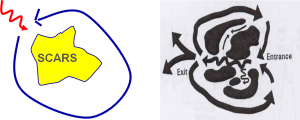
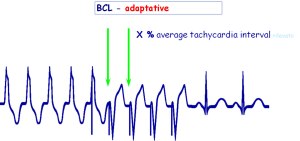
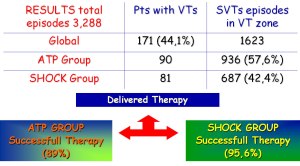


 For the first post of the year, NayaMed wants to wish a successful new year to all readers. We hope that 2012 will be the year of light.
For the first post of the year, NayaMed wants to wish a successful new year to all readers. We hope that 2012 will be the year of light.

